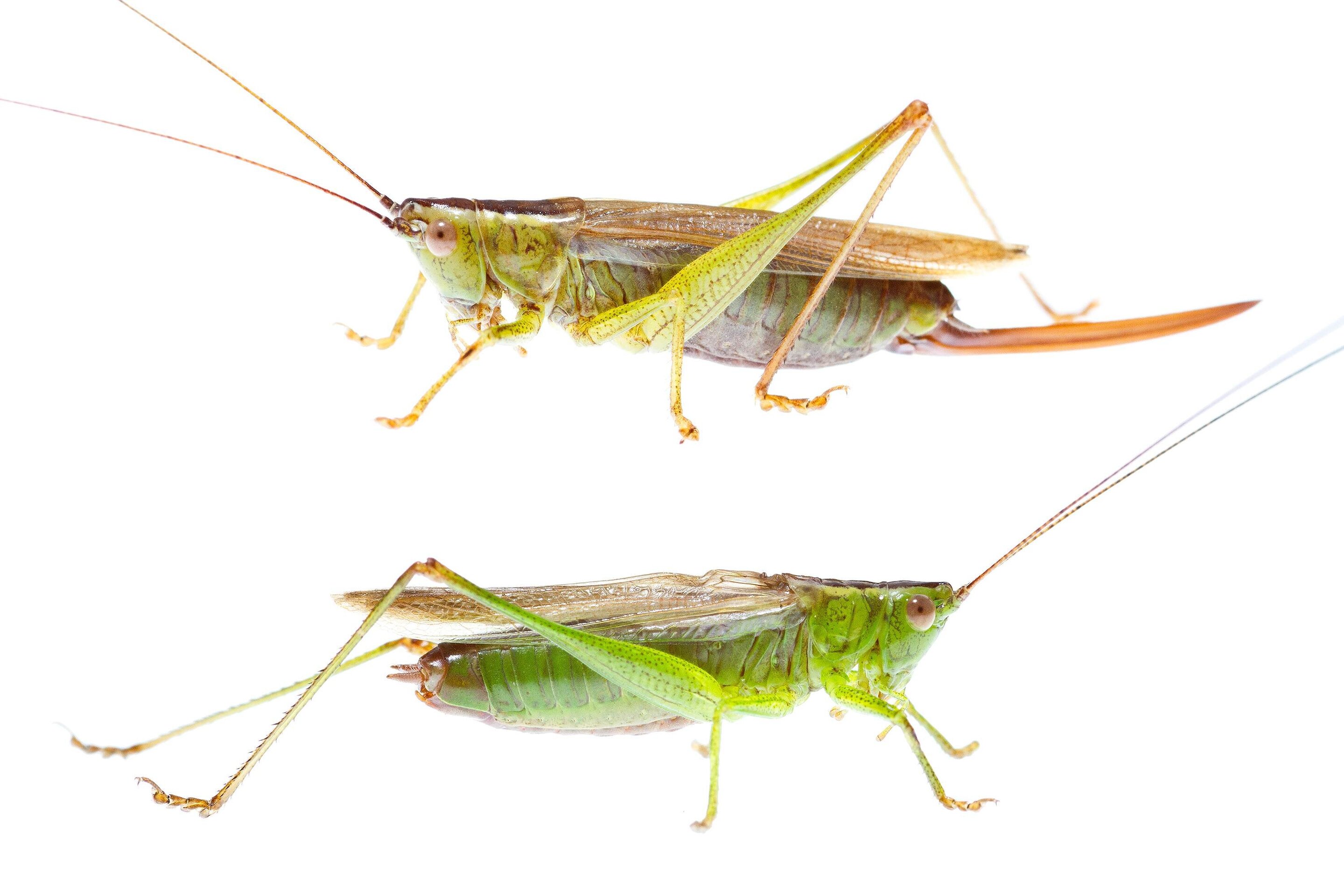#Crickets were the first to chirp 300 million years ago

“#Crickets were the first to chirp 300 million years ago”

An international team, led by Dr. Sabrina Simon (Wageningen University & Research) and Dr. Hojun Song (Texas A&M), succeeded in tracing the evolution of acoustic communication in the insect family of crickets and grasshoppers (Orthoptera). The results show that crickets were the first species to communicate, approximately 300 million years ago. The results are also significant because it was the first time this analysis has been done on such a large scale. The publication by Dr. Simon et al. appeared in the prominent scientific journal Nature Communications today.
“Insects have a vital role in terrestrial ecosystems. To understand how insects influence, sustain or endanger ecosystems, and what happens when they decline or even disappear, we first need to understand why insects are so species-rich and how they evolved,” says Dr. Simon.
Orthoptera is a charismatic insect group of high evolutionary, ecological and economic importance such as crickets, katydids, and grasshoppers. They are a prime example of animals using acoustic communication. Using a large genomic dataset, the team established a phylogenetic framework to analyze how hearing and sound production originated and diversified during several hundred million years of evolution.
Chirping
The familiar sound of crickets was first experienced 300 million years ago, the researchers found. It was experienced because specialized and dedicated hearing organs were developed later. Sound production originally served as a defense mechanism against enemies, who were startled by the vibrating cricket in their mouths. Later on, the ability to produce sound started to play a prominent role in reproduction, because sound-producing crickets had a greater chance of being located by a female.
Insects are one of the most species-rich groups of animals. They are crucial in almost every ecosystem. The number of insects is rapidly declining. Insect species are becoming invasive or disappearing due to climate change. That—in itself—has an impact on ecosystems and eventually on humans. “We need to understand the evolutionary history of this amazingly successful animal group. This is also important for our (daily) economic life because only then can we understand what happens when insect species decline or even disappear,” says Dr. Simon.
1KITE-project
“We have access to a lot of genomic data on crickets and grasshoppers, thanks to the 1KITE project and a collaboration with the Song Lab at Texas A&M University, U.S.,” Dr. Simon says. “This enables us to sanalyse how different species relate to each other. We generated a genealogical tree of when what species of crickets, grasshoppers and their allies lived on earth. On top of that, we know what species were able to produce sound and hear. That allowed us to create a timeline that shows when the first crickets could communicate: around 300 million years ago.”
The 1KITE (1K Insect Transcriptome Evolution) project aims to study the transcriptomes (that is the entirety of expressed genes) of more than 1,000 insect species encompassing all srecognised insect orders. Overall, scientists from eleven nations (Australia, Austria, China, France, Germany, Japan, Mexico, the Netherlands, New Zealand, UK and the US) are closely collaborating in the 1KITE project.
What did the katydids do when picking up bat sounds?
Hojun Song et al. Phylogenomic analysis sheds light on the evolutionary pathways towards acoustic communication in Orthoptera, Nature Communications (2020). DOI: 10.1038/s41467-020-18739-4
Citation:
Crickets were the first to chirp 300 million years ago (2020, October 2)
retrieved 2 October 2020
from https://phys.org/news/2020-10-crickets-chirp-million-years.html
This document is subject to copyright. Apart from any fair dealing for the purpose of private study or research, no
part may be reproduced without the written permission. The content is provided for information purposes only.
For forums sites go to Forum.BuradaBiliyorum.Com
If you want to read more Like this articles, you can visit our Science category.

